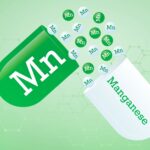
Tokenized rhodium
Tokenized rhodium investments: What is rhodium and how to invest in thismdigital asset
Tokenized commodities are revolutionizing the way that people from all around the world can invest in digital assets. In addition to holding crypto coins, investors can now pad out their portfolios with tokens of precious metals, including rhodium.
But what exactly is rhodium, and why should you consider investing in tokenized rhodium to enhance your digital asset portfolio?
In this article, we introduce you to rhodium – the precious asset – and explain why this tokenized commodity is a great option for all crypto investors this year.
What is rhodium? Uses, availability, and demand
Rhodium is a precious metal that belongs to the platinum group, alongside palladium, iridium, osmium, and ruthenium. It has a particularly high melting point (1963 degrees C), and is corrosion-resistant. It also has catalytic properties and can be used in numerous applications and industries.
Such properties have led it to be described as the most precious metal in the world, and it is undoubtedly in high demand across numerous industries.
Specifically, rhodium is valued and used in industrial applications like catalytic converters for cars and in various chemicals and electrical components. It is also used in the creation of high-value jewelry alongside numerous other precious metals.
There are rhodium deposits in different parts of the world, but Africa is the dominant producer of this precious metal, accounting for approximately 80% of the world’s output, with lots of mines in South Africa1. Rhodium is also mined in Russia and in some parts of North America.
Historically, rhodium has been regarded as one of the most valuable precious metals, and it has commanded a high global price due to its relatively limited supply and high demand.
Consequently, investing in rhodium is something that has been reserved for the wealthy and it’s not necessarily a mineral that many investors can boast in their portfolio.
However, as we explain below, the tokenization of rhodium has changed this. Now, investors from various backgrounds and countries can invest in a digital token tied to real-world rhodium, which has shifted the goalposts in numerous ways.
Tokenized rhodium – how it works
Rhodium, alongside other precious metals and minerals like gold, natural gas, and oil, are real-world assets that have been turned into tokens. Known broadly as commodity tokenization, this process takes valuable, real-world commodities and creates tokens that can be traded on digital platforms.
Tokens for these commodities are created and traded on blockchain technology and these digital assets can be bought and sold via online digital trading platforms. By owning a token, you own a digital fraction of the asset that is linked to the real-world mineral.
By 2028, the tokenized asset market is projected to reach a value of more than $7766.87 million, highlighting the incredible rise of this type of investing.
Like cryptocurrency and non-fungible tokens (NFTs), you can safely and securely hold tokenized rhodium in a digital wallet. You can then decide when to trade the token or you can keep it as part of a diversified digital asset portfolio.
Given the exceptional value of rhodium and the difficulty that most people have trading it and other precious metals, the tokenization of commodities removes many of the barriers to entry and makes it much easier for every-day investors to access a piece of the pie.
The benefits of investing in tokenized rhodium
Though the tokenization of commodities is a relatively new concept that has emerged from the digital currency space, it’s a pioneering solution that provides regular people with the opportunity to invest in precious minerals like rhodium. The benefits of tokenized rhodium include:
Improved accessibility
Historically, rhodium has been one of the more difficult precious metals to invest in, given its relative lack of availability and the fact that it is highly prized. The tokenization of rhodium means that anyone with a digital wallet and internet access can now invest in it, breaking down the prohibitive barriers to entry that used to be attached to precious mineral investing.
More security and transparency
Blockchain technology is at the crux of all rhodium tokens and subsequent trades. This technology utilizes cryptography, algorithms, and math models to safely secure data in a complex ledger system. The blockchain in which the data is stored is immutable and exceptionally secure, eliminating much of the risk associated with investing in rhodium and making transactions much more transparent.
Efficient transactions
Conventional trading in precious metals requires lots of administration, paperwork, and middlemen. As a result, the process is racked with fees and potential delays, making transactions inefficient at best and fraudulent at worst. With rhodium tokens, all transactions are extremely efficient thanks to the blockchain, with smart contracts assisting in automating the process and confirming all trades in real time.
The future of investing in tokenized rhodium
Tokenized rhodium and other precious metals have an exciting future. Not beholden to the whims of restrictive financial institutions and elitist investment processes, commodity tokenization promises to open up the world of mineral investments to all internet users around the world.
In the not so distant past, rhodium investment was a pipe dream for most people. But thanks to tokenized rhodium and the digital asset revolution, the future of precious metal investing is much brighter.
If you have a digital wallet and experience in trading crypto, you can now diversify your digital asset investment portfolio with tokenized rhodium and other precious metals, gold, and natural gas, which is a truly exciting proposition for most investors.


